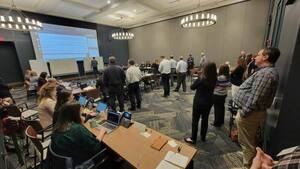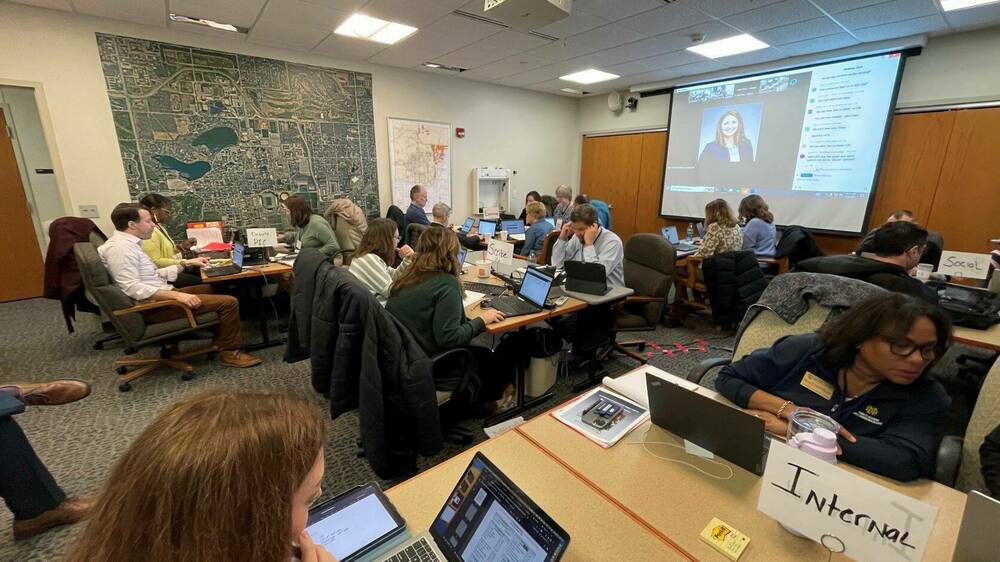On March 8, a cross-functional team of nearly 200 staff members from different corners of campus collaborated as part of a large-scale emergency operations exercise.
The mock scenario – a shooting on campus – was the basis for the drill that lasted several hours in multiple locations. First responders, including Notre Dame police and firefighters, joined the Emergency Operations Center (EOC) team, which includes groups dedicated to human life, information security, communications, finance and administration, and planning and logistics, for the exercise.
“It’s incredibly important to not only our safety and operations teams, but University leadership as well, that we regularly prepare for a crisis response in this way,” Vice President for Campus Safety and University Operations Mike Seamon said. “The direct involvement of Father Jenkins, Provost John McGreevy and Executive Vice President Shannon Cullinan sets the stage to make safety and preparedness a priority across our University campus.”

Facilitated by Notre Dame’s longtime consulting agency, the drill required University teams to simulate actions from medical response to securing campus and providing shelter for displaced students to activating the ND Alert system and working with media. In a real emergency, all members of the campus community would receive important safety information through the ND Alert system, as well as on the University’s social media channels.
“Preparing our teams for an emergency response of any scale is a crucial part of our culture of safety at Notre Dame,” Tracy Skibins, senior director of emergency management, said. “By working through a real-life scenario, we’re able to learn how to continue to evolve and improve our processes to support the campus community.”

March’s exercise was scheduled before the February shooting on the campus of Michigan State University, during which a gunman killed three students and critically wounded five others. The tragedy, though, underscored the importance of emergency preparedness and provided valuable lessons based on MSU’s response.
Notre Dame has conducted simulated exercises in accordance with the University’s Emergency Preparedness and Response Plan since 2008. There have been 10 full-scale exercises and more than 35 “tabletop” drills with the EOC team as well as additional exercises within smaller functional teams.
“We work every day to keep our campus safe, and we need everyone here to join us in that effort,” Assistant Vice President for Campus Safety and Chief of Police Keri Kei Shibata said. “If you see something out of the ordinary, report it immediately.”
Members of the campus community can do so by calling 911 in an emergency or by calling the Notre Dame Police Department at 574-631-5555. Download the ND Safe app for more personal safety resources on your mobile device.
Active violence preparedness training is available and required for all faculty, staff and students. Resources, including how to request in-person training, can be found on the NDPD website.
